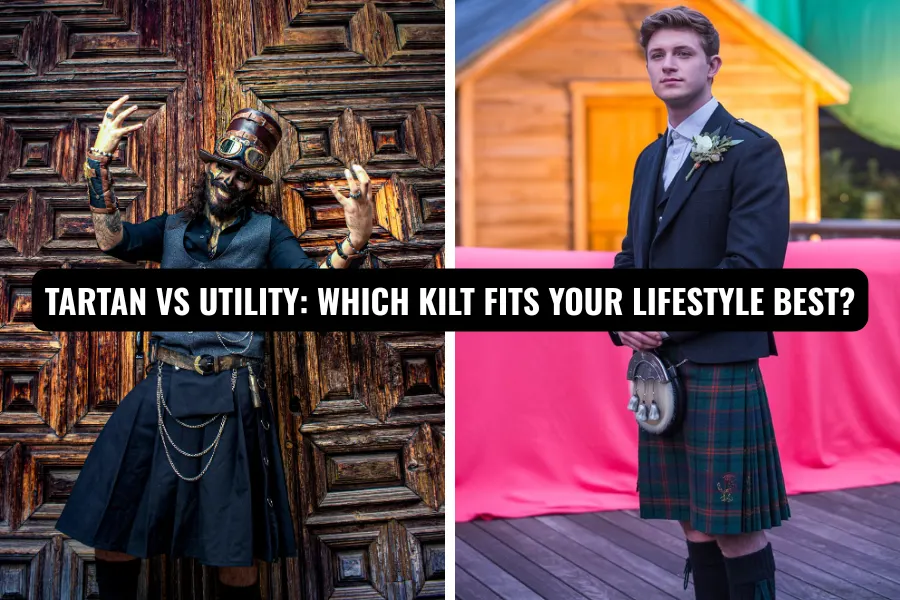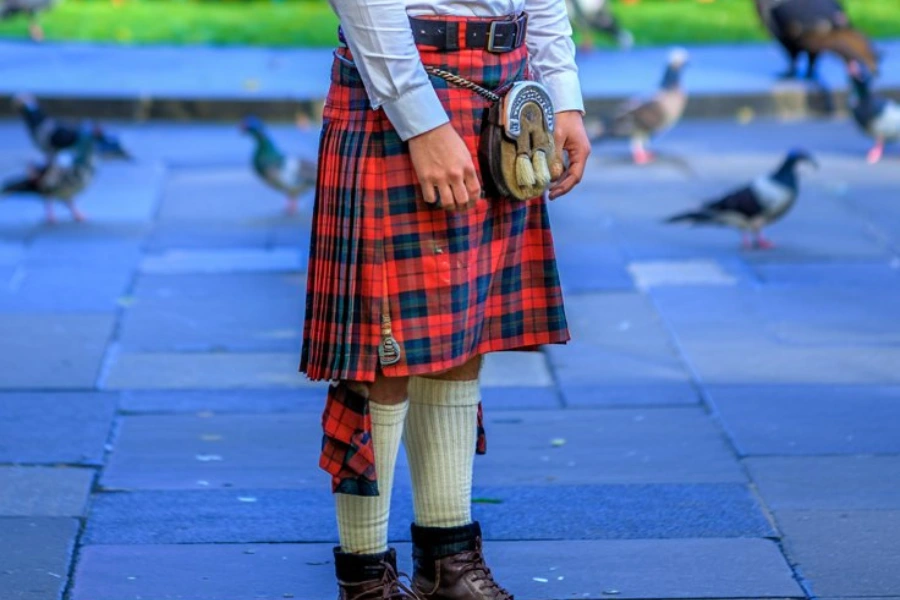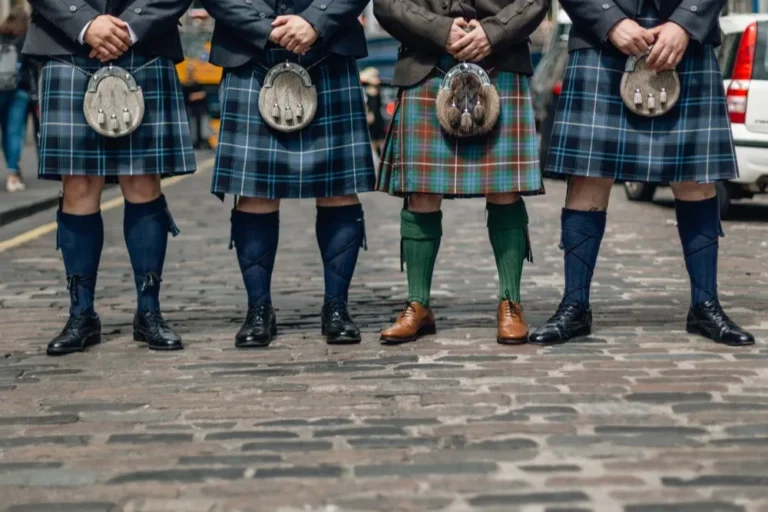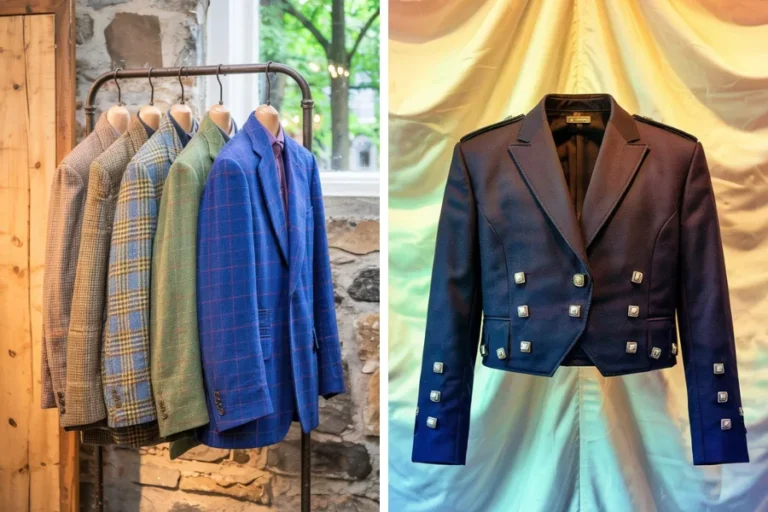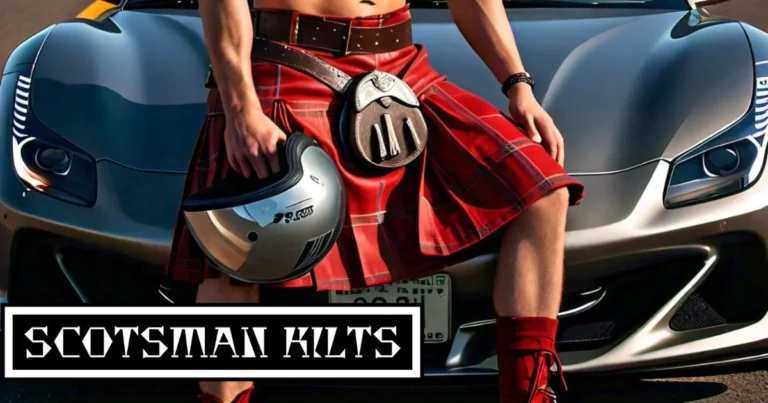Tartan VS Utility: Which Kilt Fits Your Lifestyle Best?
Choosing the right kilt isn’t always straightforward.
At first glance, it might feel simple—just pick one you like, right? But once you start looking into the options, especially between Tartan kilts and Utility kilts, things get a little more… specific.
You start noticing fabric weights, pleat styles, belt loops, cargo pockets, and suddenly you’re asking yourself questions like: Am I wearing this for tradition? Or comfort? Or practicality?
There’s no one-size-fits-all answer here. But there is a way to figure out which kilt fits your life better. You just need to know what each one really offers—and what it doesn’t.
Let’s take a look.
What Is a Tartan Kilt?
Tartan kilts are what most people imagine when they hear the word “kilt.” They’re patterned, usually in bold or meaningful colors, and they come with centuries of history.
Traditionally, a tartan represents a clan, a region, or a family. The design isn’t random—it’s woven with identity. Some people wear their clan tartan. Others just choose a pattern they like. Either way, wearing tartan feels connected to heritage, even if that connection is borrowed.
Tartan kilts are usually made from wool or a wool-blend. They have deep pleats in the back and a flat apron in the front. You fasten them with leather straps and buckles, often with a kilt pin and a sporran for formality.
They’re not exactly “modern,” and that’s kind of the point.
What Is a Utility Kilt?
The utility kilt is the opposite in many ways.
It’s not about tradition. It’s about function. These kilts are made from sturdy cotton or poly-cotton blends. They come with belt loops, cargo pockets, and reinforced stitching—designed more for movement, work, or everyday wear.
You won’t see tartan patterns here. Most are solid colors—black, olive, khaki, navy. They look more like workwear, less like ceremony.
You can bend, hike, or even do yard work in a utility kilt canada. And for a lot of people, that’s the appeal.
Where Do You Plan to Wear It?
This is the first and probably most important question.
Weddings, formal gatherings, Scottish events?
Tartan is usually the go-to. It fits. It blends in. And if you’re attending something like a Burns Night supper or a Highland Games ceremony, tartan will look right at home.
But for daily wear? Commuting? Working outdoors? Even casual events where comfort matters more than symbolism?
Utility kilts win there, no question.
Which One Is More Comfortable?
It depends on the situation.
Tartan kilts are made from wool. That means they’re warm. Great in colder weather. But wool can get heavy. And itchy, depending on the quality. If it’s well-made and fitted properly, it feels great. If it’s too long, tight, or low-quality, it can be annoying.
Utility kilts, on the other hand, are lighter. More breathable. And they’re designed for movement. If you’re walking a lot or working with your hands—or just don’t want to think about keeping your kilt in perfect folds—utility kilts offer a more forgiving experience.
That said, some people still prefer the feel of wool. The structure. The weight. So, comfort’s a bit subjective.
Which One Looks Better?
Honestly? That’s up to your taste.
Tartan kilts are striking. The patterns stand out. You’ll look formal. Put-together. And a bit traditional. People will notice. You might even get questions like “What’s your clan?” or “Is that your family tartan?”
Utility kilts are more subtle. The solid colors blend in. They look more modern—sometimes even a bit edgy, depending on the styling. Less heritage, more attitude. If you want something that says “I wear kilts because I like them, not because of tradition,” utility is your lane.
What About Maintenance?
Let’s not ignore the practical stuff.
Tartan kilts need more care. Most can’t be tossed in the wash. You’ll likely need to dry clean them, especially the wool ones. You also have to store them carefully to avoid wrinkles. And pleats can lose shape if not folded right.
Utility kilts? Much easier. Most are machine washable. They’re tougher. You can fold or hang them casually. No pleat worries. They’re closer to jeans in terms of maintenance than suits.
Are Tartan Kilts Too Formal?
Not necessarily. While they do have a formal look, they’re not limited to weddings and bagpipe performances.
Many people wear them casually—paired with a sweater, a plain shirt, or even sneakers. It’s about how you style them.
But still, they carry a weight. Symbolically and literally. Wearing a tartan feels like making a statement—whether about your roots or your respect for tradition.
That’s a good thing. Unless you’re looking for something more neutral. Then, you might lean the other way.
Are Utility Kilts “Real” Kilts?
This comes up a lot. Is a utility kilt “authentic”? Is it disrespectful?
Truth is—it’s a kilt. Just a modern one.
Some purists scoff at them. But the idea of the kilt has always evolved. From the Great Kilt to the tailored versions we see today, there’s no fixed point. The utility kilt is just the latest adaptation.
So yes, it’s real. Different, sure. But not less.
Price: Which One’s More Affordable?
This varies by brand and material, but generally:
- Utility kilts are more affordable.
Entry-level options are often under $100. Even higher-end ones rarely match the cost of a good wool tartan kilt. - Tartan kilts—especially those made from quality wool or custom-made in your specific tartan—can get pricey. You might spend $200 to $400 or more.
But again, it depends. There are synthetic tartans and machine-made kilts that bring the cost down. And on the other hand, there are luxury utility kilts that cost more than you’d expect.
Tartan Kilts For Sale: What to Watch For
If you’re browsing Tartan kilts for sale, keep these in mind:
- Check the tartan name. If you’re buying for heritage, make sure it matches your clan or region.
- Know the fabric weight. Heavyweight wool is more traditional, but mid-weight might feel better.
- Get your measurements right. A well-fitting kilt makes all the difference.
- Look at the pleating. Hand-stitched pleats hold better shape, but machine-stitched is fine for most wearers.
And—maybe obvious—avoid costume kilts. They’re fine for one-time wear, but they don’t hold up or look right for anything serious.
The Verdict: Which Kilt Fits You?
Here’s a rough guide:
Go with a tartan kilt if you:
- Want something traditional
- Are attending a formal or cultural event
- Appreciate symbolism and heritage
- Don’t mind higher care or cost
- Feel drawn to the style, regardless of context
Go with a utility kilt if you:
- Want comfort and function
- Plan to wear it casually or for everyday use
- Like the look of solid colors and cargo features
- Want easy maintenance
- Don’t feel the need to be tied to tradition
Still unsure? Maybe you don’t have to choose just one. Some people buy a tartan for weddings and formal occasions, and a utility kilt for everything else. And that makes sense. You don’t wear the same shoes to a job interview and a hike—so why expect one kilt to do it all?
Final Thought
Kilts aren’t costumes. They’re clothing. Real, wearable, versatile garments.
Whether you pick a tartan kilt tied to your roots or a utility kilt made for daily life, the point is the same—you’re making a personal choice. About comfort. About identity. About how you show up in the world.
And once you figure out which one fits you, it’s not just a purchase anymore.
It’s part of your routine. Part of your story.
No need to overthink it. But yeah, maybe stop guessing. Just ask yourself what feels right—and go from there.

